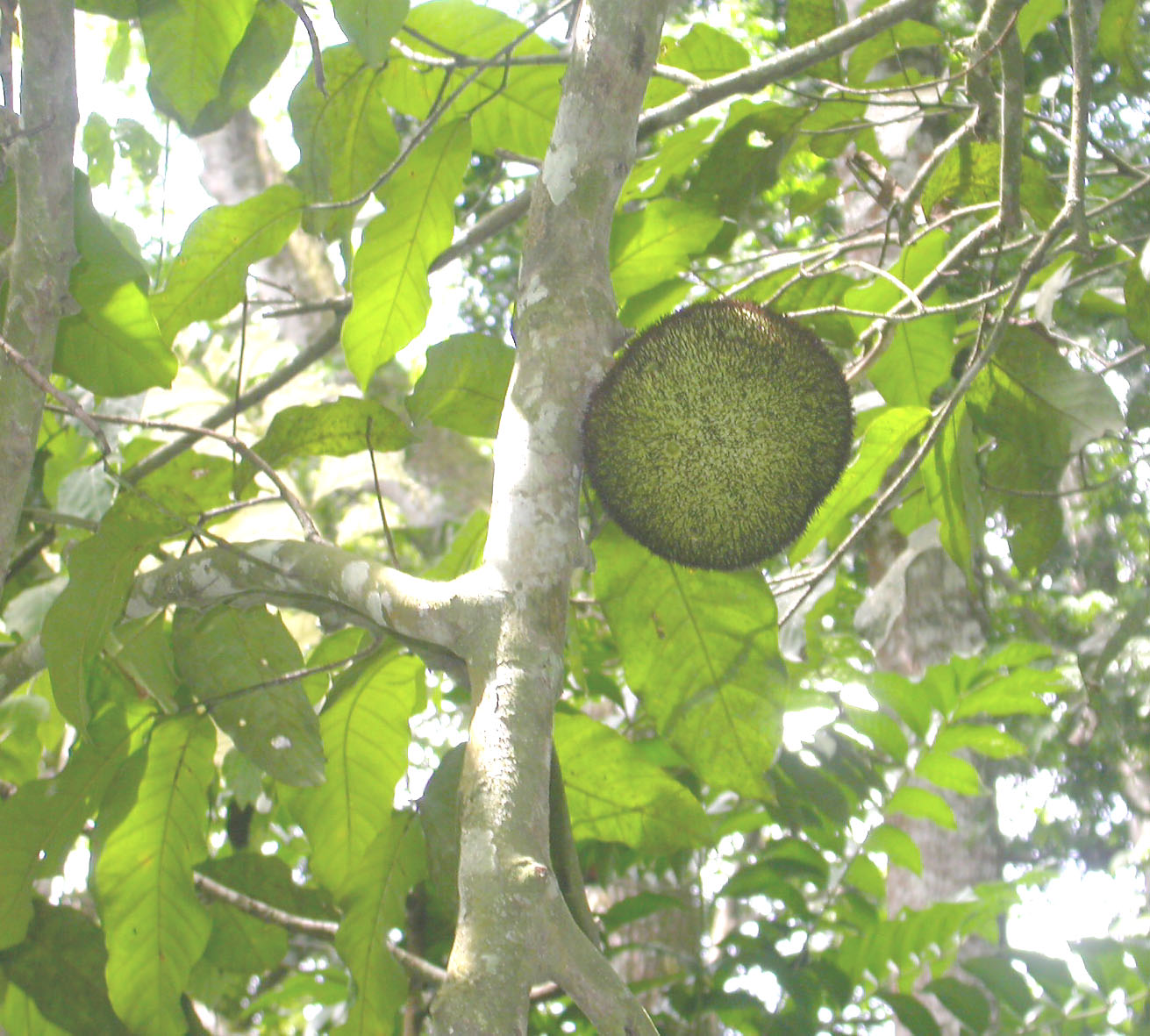Treculia africana

|
|
Treculia africana Common Names: African Breadfruit, Wild Jackfruit,
African Boxwood, Breadnut Scientific
Classification Kingdom: Plantae Clade: Tracheophytes Clade: Angiosperms Order: Rosales Family: Moraceae Genus: Treculia Species: T. africana Binomial Name: Treculia africana Decne. ex Trécul Synonyms: Treculia africana var.
inversa J.C. Okafor, Treculia africana var.
mollis (Engl.)
Léonard, Treculia affona N.E.Br. Morphological Description Treculia africana, known as African Breadfruit, is a large evergreen tree growing
to 20–30 m, occasionally 50 m, with a dense, spreading crown up to 20 m wide.
It is characterized by: · Trunk: Fluted, buttressed, 1–6 m wide, with grey bark exuding white
latex · Leaves: Large, ovate-elliptic (15–40 cm long, 10–25 cm wide), dark
green above, lighter beneath, glossy or hairy depending on variety · Flowers: Monoecious or dioecious; male club-shaped, female forming
globose heads (5–10 cm diameter) · Fruit: Massive, spherical (20–60 cm diameter), weighing 5–8.5 kg,
greenish-brown turning yellowish, with spongy mesocarp embedding numerous seeds
(1–1.3 cm long) Distribution and Habitat Treculia africana is native to tropical Africa, spanning Senegal to Sudan,
south to Angola, Zambia, and Mozambique, with notable presence in Nigeria, Côte
d'Ivoire, and Central African Republic. It thrives in: · Habitats: Humid rainforests, swampy forests, riverine areas, and
agroforestry farms · Climate: Tropical, with rainfall of 1,500–2,500 mm annually,
temperatures of 20–35°C · Soil Conditions: Rich, deep, moisture-retentive loamy or
clay soils (pH 5.0–7.0) · Elevation: Sea level to 1,500 m, tolerating partial shade or full sun Ethnopharmacology Treculia africana, commonly known as African breadfruit, is a multipurpose tree
native to tropical Africa, valued not only for its nutritional seeds but also
for its significant medicinal properties. Various parts of the plant, bark,
leaves, roots, and seeds are traditionally used for their antimicrobial,
anti-inflammatory, antioxidant, antidiabetic, and wound-healing effects.
Decoctions of the bark and leaves are employed to treat malaria, fevers,
diabetes, high blood pressure, gastrointestinal disorders, and skin infections.
The seeds, rich in nutrients and bioactive compounds, are sometimes used to
support liver function and manage cholesterol levels. Phytochemical studies
have identified flavonoids, alkaloids, saponins, terpenoids, and phenolic
compounds, which contribute to its therapeutic potential. Though traditionally
well-regarded, more scientific research is needed to fully confirm its
pharmacological efficacy and develop standardized medicinal applications. · Anthelmintic/Febrifuge: Root decoctions expel worms and reduce
fever in Ghana. · Antimicrobial
Activity: Methanolic extracts
exhibit antimicrobial properties against various pathogens, supporting
traditional uses in treating infections. · Antidiabetic
Properties: Water and ethanolic
extracts of the root possess antihyperglycaemic properties and may help manage
type 2 diabetes (Ojimelukwe et al., 2021). · Antioxidant
Activity: The plant contains
compounds with antioxidant properties, which may contribute to its therapeutic
effects and support its use in traditional medicine (Ojimelukwe et al., 2021). · Respiratory Relief: Bark infusions treat coughs and whooping
cough in Nigeria. · Dental Care: Caustic sap from male trees applied to carious teeth in
Cameroon, showing antimicrobial effects (Kapche et al., 2008). · Laxative: Leaf extracts used in Senegal for constipation. · Anti-inflammatory: Bark poultices reduce swellings in Côte
d'Ivoire · Antileprotic: Leaf decoctions treat leprosy in Uganda ⚠ Toxicity Profile: No significant toxicity reported (LD₅₀ > 5,000 mg/kg in rats
for seed extracts). Safe in traditional doses, though sap’s caustic nature may
irritate skin or mucosa if mishandled. Professional guidance is advised
(Runsewe-Abiodun et al., 2018). Additional Uses · Culinary: Seeds boiled, roasted, or ground into flour for ukwa
porridge, bread, and snacks in Nigeria · Agricultural: Leaves used as mulch and green manure, enhancing soil
fertility with 2–3% nitrogen; intercropped in agroforestry. · Industrial: Durable wood for furniture, construction, and fuelwood;
latex explored for adhesives · Ecological: Reforestation stabilizes soil in degraded areas · Fodder: Leaves (15–20% protein) fed to livestock in dry seasons References
External Links More Pictures |
|
| Compounds of Treculia africana | |
| References |